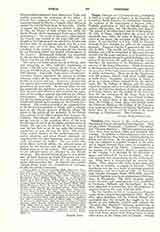

Tunja, Diocese of (TUNQUENENSIS), established in 1880 as a suffragan of Bogota, in the Republic of Colombia, South America. Its jurisdiction comprises the territory of the Department of Boyaca, with a Catholic population in 1911 of 400,000 souls; 145 priests; 153 parishes, and 159 churches and chapels. The capital of the department and see of the bishop is the City of Tunja, which before the arrival of the Spaniards was, under the name of Hunza, the residence of the zaque, the sovereign of the Muisca Indians. It was founded on August 6, 1538, by Captain Gonzalo Suarez Rondon, by order of the conqueror Quesada. Emperor Charles V granted it the title of city in 1681. The wealth and luxury of its ancient founders can still be recognized in the coats-of-arms carved over the stone entrances of its beautiful mansions. Prominent among its public buildings are: the palace of the bishop, the cathedral, and the various churches; the monastery of the Dominicans, and the convent of the Santa Clara nuns. Public instruction in the Department of Boyaca is under the supervision of the governor of the department, assisted by a director of public instruction. There are in the department over 200 primary schools, with about 15,000 pupils of both sexes. Secondary instruction in Tunja is given at various colleges supported by the department, like the College of Boyaca and the normal school for women; and at several Catholic institutions such as the Christian Brothers’ College, the Academy of Tertiary Sisters, and the College of the Presentation; for the education of the clergy there is the diocesan seminary. There are also several Catholic schools in other cities of the department, among them the College of Jesus, Mary, and Joseph, under the Christian Brothers; the College of the Presentation, in charge of the Sisters of Charity; the College of Santa Rosa de Lima; and the College of St. Louis Gonzaga, in Chiquinquira. (See Republic of Colombia.)
JULIAN MORENO-LACALLE.

